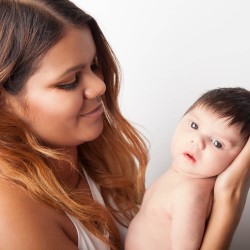In a WA first, researchers from The Kids Research Institute Australia have shown that Aboriginal babies are 22.5 times more likely to be treated for skin infections than non-Aboriginal babies.

Analysing hospital data from babies born in Western Australia between 1996 - 2012, and in particular babies under 12 months old, Aboriginal children were at a disproportionately higher risk of developing skin infections such as scabies and impetigo (school sores).
The Kids Research Institute Australia paediatric infectious diseases specialist Dr Asha Bowen said that eight out of every 100 Aboriginal babies were being treated for skin infections in their first year of life, and this demonstrates an extreme burden of disease.
“These children require treatment in hospital to prevent the development of long-term, life-threatening conditions such as kidney disease, rheumatic heart disease and blood poisoning.
“Unfortunately these results are just the tip of the iceberg and clearly reflect a very big problem in our Aboriginal communities. Skin infections are so common that they are seen as ‘normal’ and affect close to 50% of kids living in remote communities at any one time, so there is a lot going on at a community level that urgently needs attention.
“We know there are all sorts of issues that contribute to high rates of skin infections, including normalisation, poor infrastructure, housing and environmental health conditions, and the focus should be on addressing these issues to reduce the spread of infection,” said Dr Bowen.
Dr Bowen will lead a new study called the SToP Trial throughout the Kimberley in 2018, designed to see, treat and prevent skin infections in the region’s Aboriginal communities.
The Kids Research Institute Australia researcher and University of WA Associate Professor, Roz Walker, said the impact of skin infections in remote communities extends well beyond the need for acute care.
“In addition to the risk of developing serious health conditions, skin infections affect school attendance and childhood development, and hospital admissions are now becoming a significant burden on the health system,” said Associate Professor Walker.
“Working alongside Aboriginal medical services to improve community-level prevention of skin infections and provide tools to help doctors and other health care workers easily recognise and treat these conditions early on is crucial.”
Data from Dr Hannah Moore's team at the Wesfarmers Centre of Vaccines and Infectious Diseases was used in this study to make the unknown, known. The significant burden of skin infection that may not be visible at the individual level becomes apparent when almost 500,000 children are analysed together.
The paper detailing the study, Hospital admissions for skin infections among Western Australian children and adolescents from 1996 to 2012, was published on 30 November - http://journals.plos.org/plosone/article?id=10.1371/journal.pone.0188803
